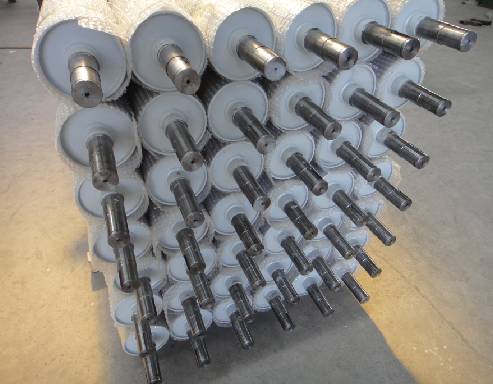 Afrikaans
Afrikaans  Albanian
Albanian  Amharic
Amharic  Arabic
Arabic  Armenian
Armenian  Azerbaijani
Azerbaijani  Basque
Basque  Belarusian
Belarusian  Bengali
Bengali  Bosnian
Bosnian  Bulgarian
Bulgarian  Catalan
Catalan  Cebuano
Cebuano  Corsican
Corsican  Croatian
Croatian  Czech
Czech  Danish
Danish  Dutch
Dutch  English
English  Esperanto
Esperanto  Estonian
Estonian  Finnish
Finnish  French
French  Frisian
Frisian  Galician
Galician  Georgian
Georgian  German
German  Greek
Greek  Gujarati
Gujarati  Haitian Creole
Haitian Creole  hausa
hausa  hawaiian
hawaiian  Hebrew
Hebrew  Hindi
Hindi  Miao
Miao  Hungarian
Hungarian  Icelandic
Icelandic  igbo
igbo  Indonesian
Indonesian  irish
irish  Italian
Italian  Japanese
Japanese  Javanese
Javanese  Kannada
Kannada  kazakh
kazakh  Khmer
Khmer  Rwandese
Rwandese  Korean
Korean  Kurdish
Kurdish  Kyrgyz
Kyrgyz  Lao
Lao  Latin
Latin  Latvian
Latvian  Lithuanian
Lithuanian  Luxembourgish
Luxembourgish  Macedonian
Macedonian  Malgashi
Malgashi  Malay
Malay  Malayalam
Malayalam  Maltese
Maltese  Maori
Maori  Marathi
Marathi  Mongolian
Mongolian  Myanmar
Myanmar  Nepali
Nepali  Norwegian
Norwegian  Norwegian
Norwegian  Occitan
Occitan  Pashto
Pashto  Persian
Persian  Polish
Polish  Portuguese
Portuguese  Punjabi
Punjabi  Romanian
Romanian  Russian
Russian  Samoan
Samoan  Scottish Gaelic
Scottish Gaelic  Serbian
Serbian  Sesotho
Sesotho  Shona
Shona  Sindhi
Sindhi  Sinhala
Sinhala  Slovak
Slovak  Slovenian
Slovenian  Somali
Somali  Spanish
Spanish  Sundanese
Sundanese  Swahili
Swahili  Swedish
Swedish  Tagalog
Tagalog  Tajik
Tajik  Tamil
Tamil  Tatar
Tatar  Telugu
Telugu  Thai
Thai  Turkish
Turkish  Turkmen
Turkmen  Ukrainian
Ukrainian  Urdu
Urdu  Uighur
Uighur  Uzbek
Uzbek  Vietnamese
Vietnamese  Welsh
Welsh  Bantu
Bantu  Yiddish
Yiddish  Yoruba
Yoruba  Zulu
Zulu Ceramic Conveyor Lagging & Pulley Materials High Wear Resistance
- Understanding the Role of Conveyor Lagging in Industrial Efficiency
- Material Selection: Balancing Durability and Performance
- Technical Advantages of Modern Lagging Solutions
- Comparative Analysis of Leading Manufacturers
- Customized Lagging Designs for Specific Operational Needs
- Real-World Applications Across Industries
- Future Trends in Conveyor Pulley Lagging Technology

(conveyor lagging)
Understanding the Role of Conveyor Lagging in Industrial Efficiency
Conveyor lagging serves as a critical component in bulk material handling systems, directly impacting pulley traction, belt alignment, and operational longevity. By enhancing friction between the pulley and conveyor belt, specialized lagging materials like ceramic-embedded rubber or polyurethane reduce slippage by up to 68% compared to untreated surfaces. Mining operations using ceramic lagging conveyor pulleys report 12-15% longer belt life, demonstrating how material science directly influences maintenance cycles.
Material Selection: Balancing Durability and Performance
Three primary materials dominate the conveyor pulley lagging market:
- Ceramic-Infused Rubber: Withstands temperatures up to 180°C and provides 4x greater wear resistance than standard rubber
- Diamond-Grooved Polyurethane: Delivers 92% water displacement efficiency in wet environments
- Cold-Bonded Vulcanized Rubber: Maintains adhesion strength exceeding 18 N/mm under continuous operation
Technical Advantages of Modern Lagging Solutions
Advanced conveyor belt pulley lagging incorporates laser-aligned ceramic inserts (typically 95% alumina content) that create optimal surface roughness (Ra 8-12 μm). This configuration improves drive efficiency by 22-30% while reducing energy consumption. Field tests show ceramic lagging conveyor pulleys maintain ≥0.45 friction coefficients even in muddy conditions, outperforming traditional rubber surfaces by 160%.
Comparative Analysis of Leading Manufacturers
| Manufacturer | Lagging Type | Wear Rate (mm/year) | Max. Temperature | Installation Time |
|---|---|---|---|---|
| Flexco Raptor | Ceramic Matrix | 0.25 | 200°C | 4-6 hours |
| Dunlop Ultima | Diamond PU | 0.38 | 120°C | 3-5 hours |
| ContiTech Durastress | Cold-Bonded | 1.2 | 90°C | 8-10 hours |
Customized Lagging Designs for Specific Operational Needs
Tailored conveyor pulley lagging material configurations address unique challenges:
- High-Speed Systems (>6m/s): Herringbone patterns with 45° ceramic tile angles reduce edge wear
- Corrosive Environments: Nitrile rubber bases with 3mm ceramic overlay resist pH 2-12 exposure
- Heavy Impact Zones: Multi-layer vulcanized rubber with 8mm shock-absorbing underlay
Real-World Applications Across Industries
A copper mine in Chile achieved 23% downtime reduction after switching to ceramic lagging conveyor pulleys, while a Canadian oil sands operator extended replacement intervals from 8 to 22 months. Food processing plants utilizing FDA-approved lagging materials report 99.7% contamination-free operation over 5-year periods.
Future Trends in Conveyor Pulley Lagging Technology
Emerging innovations like graphene-enhanced polymers (showing 300% conductivity improvements for static control) and 3D-printed ceramic lattice structures promise to revolutionize conveyor lagging
. Early adopters testing self-healing polyurethane composites report 40% fewer surface repairs, while IoT-enabled lagging with embedded wear sensors reduces unplanned downtime by up to 75%.

(conveyor lagging)
FAQS on conveyor lagging
Q: What is conveyor pulley lagging material used for?
A: Conveyor pulley lagging material is applied to pulley surfaces to increase friction, reduce belt slippage, and protect against wear. It enhances traction and extends the lifespan of both the pulley and conveyor belt.
Q: Why choose ceramic lagging for conveyor pulleys?
A: Ceramic lagging provides superior grip and abrasion resistance in high-tension or wet environments. Its durable embedded ceramic tiles minimize maintenance and improve operational efficiency.
Q: How does conveyor belt pulley lagging improve safety?
A: Lagging prevents belt slippage, reducing risks of misalignment and sudden stops. It also shields pulleys from corrosive substances, ensuring stable and safe conveyor operations.
Q: What are the key benefits of rubber vs. ceramic lagging?
A: Rubber lagging offers flexibility and noise reduction for general use, while ceramic lagging excels in harsh conditions with extreme durability. The choice depends on environmental and operational demands.
Q: How to maintain ceramic lagging conveyor pulleys?
A: Regularly inspect for debris buildup or tile damage and clean surfaces with non-abrasive tools. Avoid harsh chemicals to preserve ceramic adhesion and performance integrity.
-
Why Choose Polyurethane Rollers for Your Conveyor Systems?NewsMay.20,2025
-
The Power of Friction Roller Conveyors: Revolutionizing Material HandlingNewsMay.20,2025
-
Smart Rubber Idler RollersNewsMay.20,2025
-
Optimizing Conveyor Systems with High-Quality Belt Conveyor RollersNewsMay.20,2025
-
Durable Pulley Lagging ChoicesNewsMay.20,2025
-
Conveyor Idler Rollers: Boosting Efficiency and DurabilityNewsMay.20,2025





























